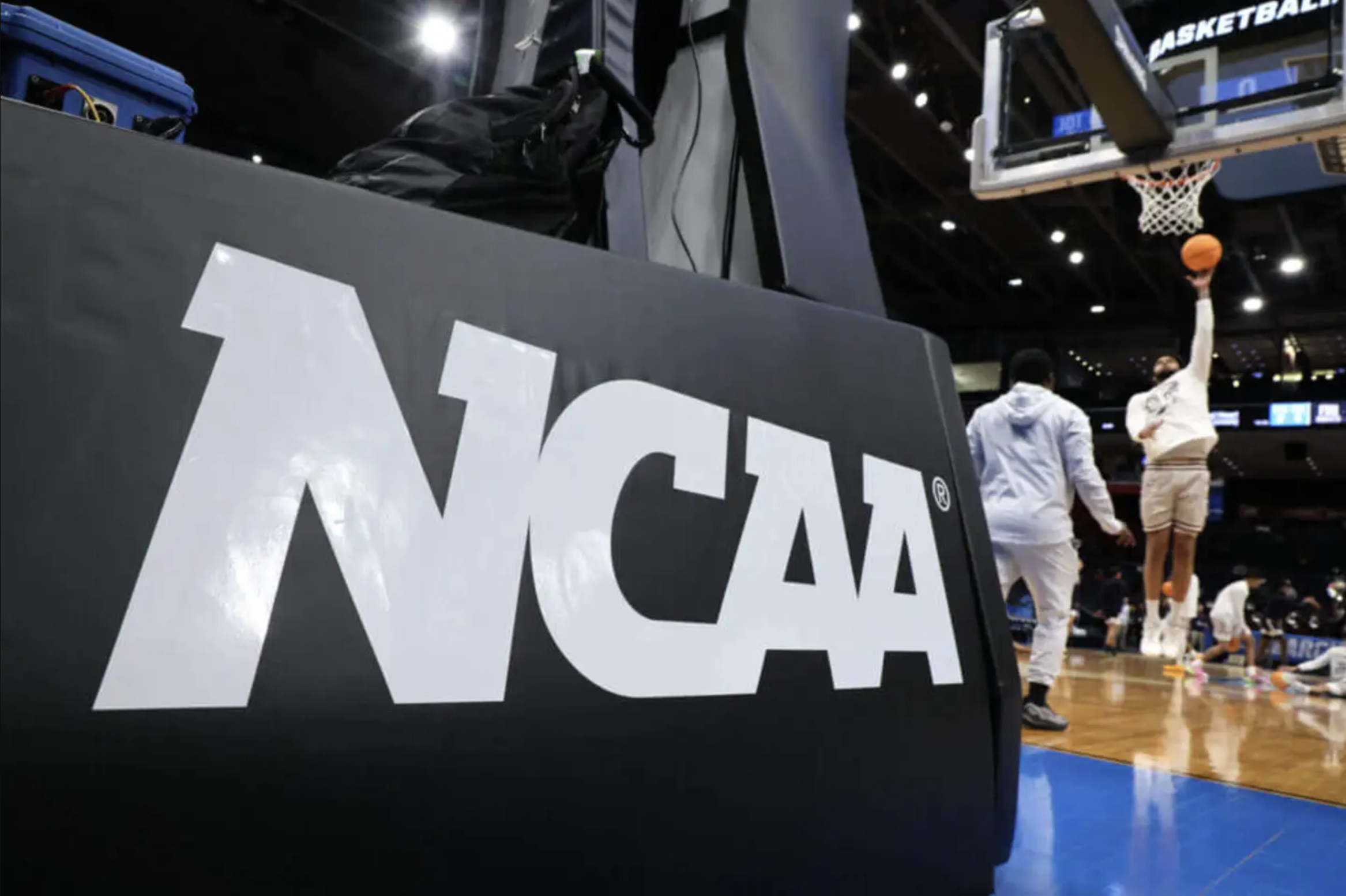
(Source)
The House v. NCAA Settlement: A Turning Point in College Sports Economics
In May 2025, the NCAA announced a landmark settlement in House v. NCAA, a class action that could reshape the economics of college sports. The agreement, approved by Judge Claudia Wilken, authorizes schools to pay student-athletes directly up to $20.5 million per school annually, marking the first time universities will share broadcast and sponsorship revenue with athletes. The decision follows years of escalating legal and political pressure to reform college sports’ amateurism model–a system premised on the idea that student-athletes compete for educational opportunities rather than monetary compensation, preserving a supposed distinction between college and professional sports. Yet amid celebration, a fundamental question remains: without a federal standard, how can colleges ensure compliance, fairness, and competitive equity?
From Amateurism to Reform: The Legal Foundations
The current shift traces back to a series of legal battles challenging the NCAA’s restrictions on compensation. In O’Bannon v. NCAA (2015), the Ninth Circuit held that the NCAA’s limits on name, image, and likeness (NIL) licensing violated antitrust law. Six years later, the Supreme Court’s unanimous decision in NCAA v. Alston (2021) further eroded the NCAA’s amateurism defense, ruling that education-related benefits could not be capped. Shortly thereafter, the NCAA suspended its prohibition on NIL compensation, triggering a patchwork of state laws and institutional policies that left universities struggling to maintain competitive balance.
The House v. NCAA litigation extended these challenges to the broader economics of college sports. Plaintiffs argued that the NCAA’s ban on direct payments unlawfully suppressed athlete compensation in violation of antitrust law. Facing an unfavorable legal trajectory, the NCAA agreed to settle for an estimated $2.8 billion in damages and to permit schools to allocate up to $20.5 million annually to athletes. This deal effectively ends the NCAA’s century-long claim that student-athletes are amateurs, while sidestepping a definitive judicial ruling that could have upended the entire collegiate model.
Fragmented Regulation: The Patchwork of State NIL Laws
Despite its historic scope, the House settlement does not resolve the regulatory chaos surrounding NIL and athlete pay. Since 2021, over 30 states have enacted NIL statutes, each with distinct definitions, enforcement mechanisms, and disclosure rules. Some states, such as Texas and Florida, allow broad school involvement in NIL facilitation; others, like California, impose stricter limits to avoid undue influence. The NCAA’s interim NIL policy defers to these state laws, resulting in a highly uneven playing field across the nation.
Congress has introduced at least eight NIL reform bills since 2021, including bipartisan proposals such as the College Athletes Protection and Compensation Act, but none have passed. The absence of federal coordination leaves universities vulnerable to litigation from both athletes and regulators. Further complicating matters, the U.S. Department of Education’s February 2025 decision to rescind Biden-era guidance on NIL’s intersection with Title IX compliance has deepened institutional uncertainty about whether compensation models must be gender-balanced.
Gender Equity and Title IX: The Unanswered Question
Direct payment systems raise profound gender equity concerns. Title IX prohibits discrimination in educational programs receiving federal funds, including athletics. Yet the House settlement provides no mechanism to ensure that payments comply with Title IX’s equal treatment requirements. If schools distribute funds primarily to revenue-generating sports like football and men’s basketball, they risk violating Title IX unless they can demonstrate equitable treatment across programs.
The Education Department’s rescission of the prior guidance leaves universities without a clear compliance roadmap. Legal scholars are divided: some argue that revenue sharing tied to market value should not trigger Title IX scrutiny, while others contend that any school-administered payments constitute educational benefits subject to equity mandates. The lack of federal interpretation increases the likelihood of litigation from female athletes and advocacy groups challenging pay disparities. Without clear rules, universities face an impossible balancing act between market realities and statutory equality obligations.
The Employee Status Debate
Perhaps the most transformative and contested implication of the House settlement is the renewed debate over whether student-athletes are employees. If schools directly pay athletes, it strengthens arguments that they perform compensable labor under the National Labor Relations Act (NLRA). The National Labor Relations Board (NLRB) signaled openness to this view in its 2023 Dartmouth Men’s Basketball decision, where regional directors found that scholarship athletes engaged in work benefiting the university.
If this reasoning extends to all Division I athletes, schools could face unionization efforts, collective bargaining obligations, and exposure to wage and hour laws. The NCAA settlement, while framed as a private agreement, may inadvertently accelerate this shift. University administrators now face the paradox of paying athletes substantial sums while insisting they are not employees, a legal fiction increasingly difficult to sustain. For universities, the prospect of widespread unionization presents a web of challenges: collective bargaining could increase operating costs, constrain institutional flexibility, and introduce adversarial labor relations—issues that have already surfaced in prior graduate student and faculty unionization efforts at institutions like Cornell and other research universities.
Persistent Antitrust Risks and Competitive Imbalance
The NCAA’s legal challenges are far from over. Even as it settles House, parallel antitrust suits continue to challenge residual restrictions on compensation. Critics argue that the new model could itself be vulnerable under Alston-style scrutiny if it suppresses competitive compensation. Others worry that divergent state laws create incentives for athletes and schools to relocate to more permissive jurisdictions, undermining the principle of fair competition.
Without a federal NIL framework, states are effectively setting national policy through interstate recruiting dynamics. For example, an athlete in Georgia may be able to monetize their NIL rights under one regime, while a counterpart in Pennsylvania operates under different constraints. This legal patchwork resembles the early days of online gambling or cannabis regulation–industries that ultimately required federal coordination to avoid enforcement chaos.
Policy Pathways: Toward a Federal Framework
The current moment calls for federal leadership to ensure consistency, fairness, and compliance. Four major policy options have emerged from ongoing debate. A Federal NIL and Revenue-Sharing Framework could establish baseline standards for NIL contracts, disclosure requirements, and permissible institutional involvement. Such legislation would preempt conflicting state laws while preserving limited flexibility for universities.
A Title IX Carve-Out or Clarification could come from the Department of Education or Congress, clarifying whether and how direct payments count as educational benefits subject to Title IX. Alternatively, Congress could explicitly exempt revenue-sharing payments from Title IX’s proportionality analysis to avoid litigation paralysis.
A Collective Bargaining Model could recognize athletes as a distinct class of “quasi-employees,” entitled to negotiate over compensation and working conditions without full employee status. This hybrid approach might bring transparency and structure while preserving the educational character of college sports.
A National NIL Registry, managed by the Federal Trade Commission or Department of Education, could require disclosure of all NIL deals to enhance oversight and deter exploitation. Transparency would also aid in monitoring compliance with fair market standards and anti-discrimination laws.
Conclusion: A Victory and a Warning
The House settlement is both a victory and a warning. It acknowledges what courts, athletes, and the public have long recognized: that college sports are a multibillion-dollar enterprise built on unpaid labor, but it leaves universities to navigate an uncharted legal terrain. Without federal guidance, the risk of inconsistent enforcement, gender inequity, and renewed antitrust liability remains high. As the 2026 college sports season looms, universities will experiment with payment models under uncertain rules. The absence of federal clarity not only endangers institutional compliance but threatens the legitimacy of college athletics itself. The NCAA’s amateurism era may be ending, but unless Congress and regulators act, the next era risks being defined not by fairness or opportunity, but by fragmentation and inequity.
Suggested Citation: Yubin Kim, The Student-Athlete Compensation Shift — Where are the Federal Guidelines?, Cornell J.L. & Pub. Pol’y, The Issue Spotter, (Oct. 31, 2025), https://
publications.lawschool.cornell.edu/jlpp/2025/10/31/the-student-athlete-compensation-shift-where-are-the-federal-guidelines/.
About the Author

University of California, Santa Barbara with a degree in Psychological & Brain Sciences.
Aside from her involvement with Cornell Law School’s Journal of Law and Public Policy,
she is Co-President of the Women of Color Collective, Social Chair of the Asian Pacific
American Law Students Association, and Vice President of Outreach for the Antitrust Club.

